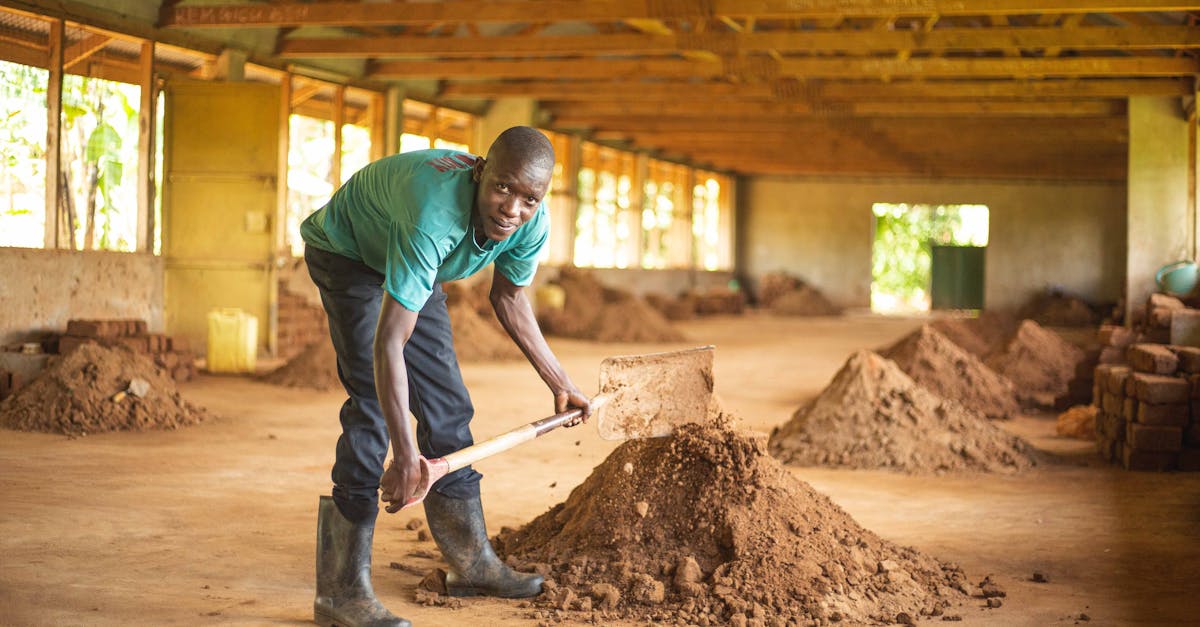
Table Of Contents
is not lost through gaps or leaks in the building envelope. Ignoring airtightness can lead to significant energy losses and reduced thermal comfort within the home.
Another mistake to steer clear of is choosing the wrong type or insufficient amount of insulation. It is essential to select insulation materials that are appropriate for the specific areas of the home being renovated and to ensure that they are installed correctly. Using inadequate insulation or failing to address thermal bridging can compromise the energy efficiency and comfort levels of the upgraded Passive House. By avoiding these common missteps, homeowners can enhance the performance of their home's insulation and airtightness, leading to a more sustainable and comfortable living environment.Related Links
Ensuring Proper Installation to Prevent Energy LossPassive House Construction Techniques: Ventilation System Installation
Proper installation is vital to prevent energy loss in passive house renovations. Ensuring that insulation materials are correctly placed and airtightness measures are properly sealed can significantly improve the overall energy efficiency of the building. Inadequate installation can lead to thermal bridging and air leakage, undermining the effectiveness of the renovation efforts and increasing energy consumption.
ing with Professionals for Insulation and Airtightness Solutions
When it comes to ensuring your passive house renovations meet the high standards of insulation and airtightness, working with professionals is essential. Hiring experts in the field who have experience and knowledge in sustainable building practices can make a significant difference in the success of your renovation project. These professionals can provide valuable insights, offer innovative solutions, and guarantee that the insulation and airtightness upgrades are installed correctly to maximize energy efficiency and comfort in your home.
Certified installers who adhere to Australian building codes and standards will ensure that your renovation meets all regulatory requirements for insulation and airtightness. By entrusting the job to qualified professionals, you can have peace of mind knowing that the work is done to the highest quality and in compliance with industry regulations. Moreover, experienced professionals can guide you through the entire process, from selecting the right materials to executing the installation with precision and care. Their expertise will not only enhance the performance of your home but also contribute to a more sustainable and environmentally friendly living space.
Hiring Certified Installers for Reliable Renovation Services
Hiring certified installers for your insulation and airtightness renovations is crucial to ensure the quality and effectiveness of the work. Certified professionals have the necessary training and expertise to handle the complexities of upgrading your home to meet passive house standards. By choosing certified installers, you can rest assured that the work will be done correctly and up to code, minimizing the risk of errors or deficiencies that could compromise the performance of your home.
Certified installers not only bring technical skills to the table but also offer valuable insights and advice on how to maximize the energy efficiency of your home. Their knowledge of the latest techniques and materials can help you achieve the highest possible level of insulation and airtightness, ensuring that your home remains comfortable and energy-efficient for years to come. When selecting installers for your passive house renovations, be sure to look for reputable professionals who hold relevant certifications and have a track record of delivering high-quality results.
FAQS
What are the key considerations for insulation and airtightness upgrades in Passive House renovations?
Key considerations for insulation and airtightness upgrades in Passive House renovations include ensuring proper installation to prevent energy loss, compliance with Australian building codes and standards, and working with professionals for reliable solutions.
What are some common mistakes to avoid in insulation and airtightness upgrades during renovations?
Common mistakes to avoid in insulation and airtightness upgrades during renovations include improper installation leading to gaps and thermal bridges, using inadequate insulation materials, and neglecting airtightness measures that can compromise energy efficiency.
How can I ensure compliance with Australian building codes and standards for insulation and airtightness in renovations?
To ensure compliance with Australian building codes and standards for insulation and airtightness in renovations, it is essential to work with professionals who are familiar with the regulations and can provide guidance on meeting the required specifications.
Insulation Materials for Passive House Buildings
Thermal Bridging: Impact on Insulation in Passive HouseTerms of Use
Vapor Control and Insulation in Passive House Construction
Airtightness Testing and Standards in Passive House
Insulation Techniques for Passive House Energy Efficiency
Achieving Airtightness in Passive House StructuresPrivacy Policy
The Role of Insulation in Passive House Design